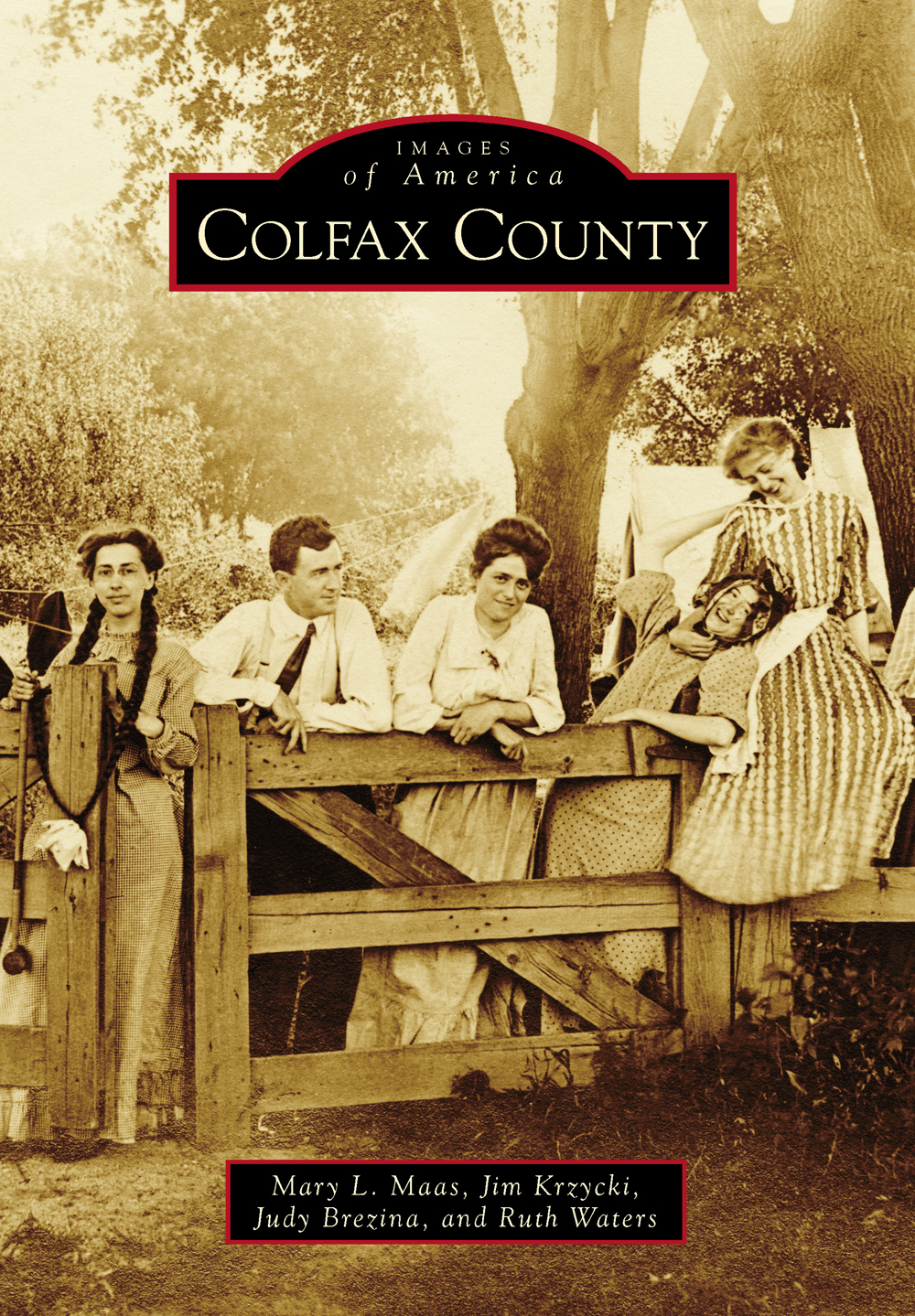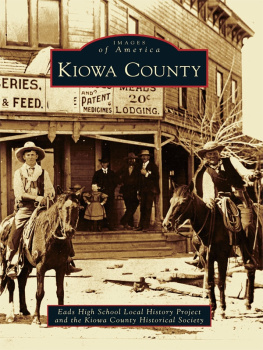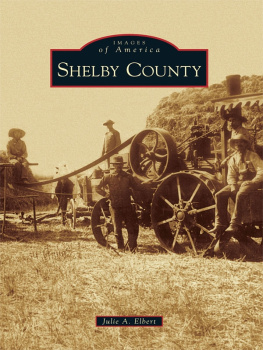Brezina Judy - Colfax County
Here you can read online Brezina Judy - Colfax County full text of the book (entire story) in english for free. Download pdf and epub, get meaning, cover and reviews about this ebook. City: Colfax County (Neb.);Nebraska;Colfax County, year: 2014, publisher: Arcadia Publishing, genre: Home and family. Description of the work, (preface) as well as reviews are available. Best literature library LitArk.com created for fans of good reading and offers a wide selection of genres:
Romance novel
Science fiction
Adventure
Detective
Science
History
Home and family
Prose
Art
Politics
Computer
Non-fiction
Religion
Business
Children
Humor
Choose a favorite category and find really read worthwhile books. Enjoy immersion in the world of imagination, feel the emotions of the characters or learn something new for yourself, make an fascinating discovery.

- Book:Colfax County
- Author:
- Publisher:Arcadia Publishing
- Genre:
- Year:2014
- City:Colfax County (Neb.);Nebraska;Colfax County
- Rating:4 / 5
- Favourites:Add to favourites
- Your mark:
- 80
- 1
- 2
- 3
- 4
- 5
Colfax County: summary, description and annotation
We offer to read an annotation, description, summary or preface (depends on what the author of the book "Colfax County" wrote himself). If you haven't found the necessary information about the book — write in the comments, we will try to find it.
Colfax County — read online for free the complete book (whole text) full work
Below is the text of the book, divided by pages. System saving the place of the last page read, allows you to conveniently read the book "Colfax County" online for free, without having to search again every time where you left off. Put a bookmark, and you can go to the page where you finished reading at any time.
Font size:
Interval:
Bookmark:

IMAGES
of America
COLFAX COUNTY

This map of Colfax County was drawn in 1936. It shows the location of the towns, villages, and some of the locations of the farm precincts that are included in this book of historical photographs. (Courtesy of Schuyler Historical Society and Museum.)
ON THE COVER: The photograph shows a group of young men and women enjoying an old swinging gate. Though the persons in the photograph were not identified, the caption under the photograph reads, Home Sweet Home. The last swing on the old gate. (Courtesy of House of Yesteryear and Marian Beck.)
IMAGES
of America
COLFAX COUNTY
Mary L. Maas, Jim Krzycki,
Judy Brezina, and Ruth Waters

Copyright 2014 by Mary L. Maas, Jim Krzycki, Judy Brezina, and Ruth Waters
ISBN 978-1-4671-1196-6
Ebook ISBN 9781439646236
Published by Arcadia Publishing
Charleston, South Carolina
Library of Congress Control Number: 2013955125
For all general information, please contact Arcadia Publishing:
Telephone 843-853-2070
Fax 843-853-0044
E-mail
For customer service and orders:
Toll-Free 1-888-313-2665
Visit us on the Internet at www.arcadiapublishing.com
This book is dedicated to the men, women, and children who endured the journey from their place of birth, whether it was across the ocean or across this country, to find a better life for their loved ones and descendants who would follow. They survived extreme conditions to thrive and to realize many of their hopes and dreams.
CONTENTS
ACKNOWLEDGMENTS
We wish to thank each and every wonderful person who spent many hours gathering and identifying vintage photographs for this book, such as museum curators and board members Judy Brezina, Jim Krzycki, LaVerna Brichacek, and Merlin Doc Sucha from the Schuyler Historical Society and Museum. We appreciate the access to many postcards and pictures privately collected by Dan Wisnieski of Schuyler.
Thanks also to curator Ruth Waters from the Clarkson Historical Museum, Chuck Hamernick and his staff at the Bluebird Nursery of Clarkson, and Alma Meyer of Pilger, Nebraska, who shared her family history from the Clarkson area.
There were so many more individuals who aided in this project, such as Miriam Weimann and Kathy Heard and board members at the Howells Historical Museum; Marvine and Allen Koliha for information of the Heun community and the village of Howells; Marian Beck, curator of the House of Yesteryear in Leigh; Helen Belohrad, wife of Adolph Duffy Belohrad and a lifelong resident of Leigh; David Reininger, president of the Colfax County Fairgrounds board located in Leigh; and Darlene Divis and Jo Rowland of Rogers, Nebraska, who graciously allowed scanning in her home. We want to express a deep appreciation to all those persons, past and present, that are connected in some way to Colfax County and its history. Those who were spoken to by telephone but not met yet were willing to give information and leads to photographs. An apology to anyone accidently missed or not acknowledged by name that helped in making this book the best it could be. It is important to recognize those who took the photographs, recorded the history, and preserved it all for the future generations to know what it was like in the beginning. An apology is extended for any errors within the captions, as some of the research conducted and information provided with the images included in this book was limited.
A special thank you goes to Mary Margaret Schley, Maggie Bullwinkel, and the staff at Arcadia for all their help with publication of this book. Last, but never forgotten, a huge thank you to friends and family who gave support and encouragement, especially the one who did all the proofreading.
INTRODUCTION
In 1847, a group of Mormons passed through Nebraska on the north side of the Platte River. They became the trailblazers for some 10,000 followers during 1847 and 1848 that were on their way to the Great Salt Lake region in the Utah Desert. This trail became the Mormon Trail, also known as the California Trail, and for part of the way through Nebraska, it was also called Military Road. At that time, Nebraska was known as Indian country, not becoming a territory until 1854. There were no roads or bridges, except for the natural trails and rough bridges built to cross small streams.
A national road received appropriations from Congress on February 17, 1855. It passed through the southern portion of the area that later became Colfax County. The national designation was to indicate the movement of troops and supplies to the frontier.
In 1856, a company in Omaha was formed to settle a town west of North Bend on the Platte River. E.W. Toncray and Isaac Albertson were to conduct a search and establish a town. Thus, Buchanan became the first village of Colfax County and was located at the confluence of Shell Creek and the Platte River. Although the first post office of Colfax County operated in Buchanan until 1869, few residents ever settled there. One notable fact about Buchanan included the birth of the first white baby, Cora Albertson, born in Colfax County. This site was deemed unsatisfactory, and they moved on to settle a town five miles west called Neenah, situated near Shinns Ferry. This site also failed to prosper despite its good location. The so-called paper town of Buchanan ultimately disappeared. There is no longer any visible sign of the village called Buchanan.
In 1856, Isaac Albertson was the first permanent settler near Shell Creek. He became the first postmaster in Colfax County. He erected the first frame house in Platte County, which later became a part of Colfax County. The second settler to put down roots in the area of Schuyler was Daniel Hashberger.
In 1862, Congress created the Union Pacific Railroad. The nation was fighting the Civil War and needed faster transportation for the military. Construction began in Omaha in 1865 and reached the Shell Creek Station, present-day Schuyler, in 1866. In 1869, Shell Creek Station belonged to the Union Pacific Railroad. It consisted of a station depot, a section house, and several small units. On March 15, 1869, the legislature split Platte County into three units, one of which became Colfax County, named after the vice president under Pres. Ulysses S. Grant, Schuyler Colfax. A supplementary act designated Schuyler as the county seat, and the frontier town of Schuyler was officially born. Schuyler developed rapidly and holds the distinction of having the first municipal water plant in the state, as well as the first electric plant and telephone exchange. Business and residential areas thrived and Schuyler kept growing.
For a brief period, from 1869 to 1871, drovers out of Texas were in search of a way to get their product to eastern markets. They became unhappy with the Kansas prices and extended the drives even farther north. The Chisholm Trail was then the path for beef on the hoof through Kansas and up into Nebraska. A stream of hundreds of thousands of cattle flowed from south to north up to the Union Pacific Railroad. Columbus and Schuyler were fierce competitors to be the shipping point for these longhorns. At its peak in 1870, there were 40,000 to 50,000 head shipped out of Schuyler, and stockmen would have taken up to 40,000 more head had they been available.
The Missionary Benedictine Congregation of Saint Ottilien, Germany, and a dependent house of the Abbey of Munsterschwarzach are integral parts of the Schuyler community. The first group of monks arrived in Schuyler in March 1935. They moved into a convent left empty by the Notre Dame Sisters of Omaha. Over the years, they remodeled and extended the living space to accommodate the monks workload in the community and its outreach. By 1974, the mission housed 12 monks, and a larger facility was sorely needed. The Anna Ehernberger family donated 15 acres of land on Fuller Hill, four miles north of Schuyler, for a new mission office and monastery. A mission house was built into the hillside for conservation of energy. The facility consists of 14 monastic rooms, 4 guestrooms, community rooms, a library, kitchen, storage area, and all supporting facilities. The chapel is the heart of the monastery. On September 16, 1979, the new facility was dedicated. The new St. Benedict Center was opened north of the mission house in June 1997. It is an 84-bed facility for weeklong, overnight, and weekend retreats and programs for all faiths. Unique art and items from around the world are sold in the gift shop and bookstore. In the past 10 years, the ethnic population has changed and now includes an influx of people from Mexico, Honduras, Nicaragua, and other South American countries. It is a challenge for the religious community to provide a ministry for all.
Next pageFont size:
Interval:
Bookmark:
Similar books «Colfax County»
Look at similar books to Colfax County. We have selected literature similar in name and meaning in the hope of providing readers with more options to find new, interesting, not yet read works.
Discussion, reviews of the book Colfax County and just readers' own opinions. Leave your comments, write what you think about the work, its meaning or the main characters. Specify what exactly you liked and what you didn't like, and why you think so.









